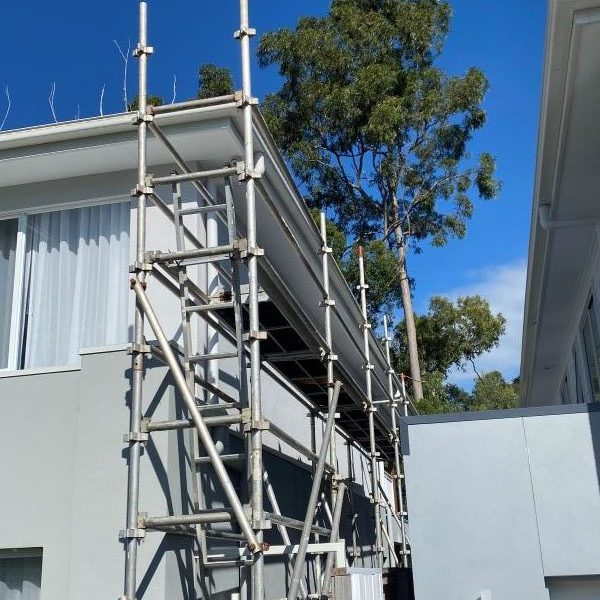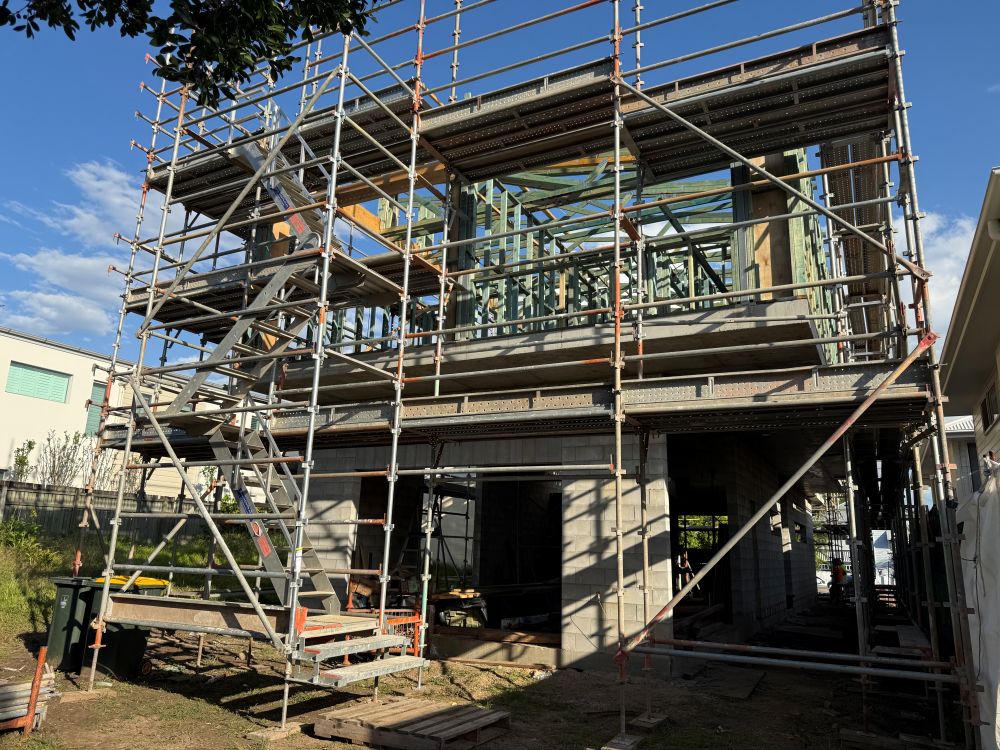Enhancing Scaffold Load Capacity: Essential Guidelines for Safety and Legal Compliance in Construction Projects
The concept of scaffold load capacity is critically important in the construction industry, as it establishes the maximum weight that a scaffold can safely support during various activities. This vital factor encompasses three primary categories of loads that must be considered meticulously:
- The weight of the scaffold itself, often referred to as the dead load, which is the inherent weight of the materials used in the scaffold
- The weight of workers, tools, and materials positioned on the scaffold, known as the live load, which fluctuates with the number of personnel and equipment
- External forces such as wind, rain, or vibrations impacting the scaffold, classified as environmental load, which can significantly alter the structural integrity
Comprehending these various loads is crucial, as they directly affect the overall stress exerted on a scaffold during its operational phase. Adhering to these calculations is not merely a recommendation; it is a legal obligation under Australian law designed to safeguard the well-being of all personnel involved in construction activities.

How to Effectively Utilize Our Scaffold Load and Height Calculator: A Comprehensive Walkthrough
While there is no universal formula applicable to every scaffold configuration, our scaffold calculator offers a user-friendly interface that enables users to obtain precise estimates by simplifying essential variables. This tool is specifically designed for residential builders, homeowners, and scaffold hire professionals who adhere to the regulations established by Australian OHS standards.
Step 1: Determine the Type of Work Being Performed
Identify the specific nature of the work, which may encompass tasks such as roof restoration, exterior painting, solar panel installation, cladding, or rendering. Understanding the type of work is critical as it influences the scaffold’s design and load requirements.
Step 2: Specify the Number of Workers Involved
For instance, you may enter the number of workers, such as two individuals who will be actively working on the scaffold platform at the same time. This information is vital for calculating the live load accurately.
Step 3: Estimate the Weight of Materials to Be Used
This step could involve estimating the weight of approximately 120 kg worth of rendering materials or tools that will be utilized during the project. Accurate weight estimations are essential for ensuring the scaffold can safely support all items.
Step 4: Input the Height of the Scaffold Platform
For example, you may set the height of the platform at 4.5 metres above ground level. Correctly measuring the height is crucial in determining the necessary safety measures and compliance requirements.
After entering this information, the calculator will provide a recommended scaffold configuration that includes:
- The appropriate duty class (e.g., Light, Medium, or Heavy) based on the calculated loads
- An estimation of the Safe Working Load (SWL) per bay, ensuring it meets safety standards
- The suggested scaffold type (e.g., aluminium tower or steel frame) best suited for the project
- Essential safety features needed (including guardrails, soleplates, and stabilisers) to enhance protection
- Any compliance triggers related to height (e.g., tie-offs required above 4 metres) to maintain safety
Understanding the Reasons Behind the Absence of a Universal Scaffold Load Formula
<pAlthough the scaffold calculator serves as a practical tool for making estimates, scaffolders and engineers do not depend solely on a single formula due to several significant reasons:
- Scaffold systems can greatly differ based on material and design, including variations such as aluminium, steel, modular, and tube-and-coupler systems
- The intended use of the scaffold significantly influences the load capacity; for instance, the requirements for painting differ from those for masonry work
- Varied manufacturers provide different platform strength ratings and component specifications, which can lead to discrepancies in load calculations
Industry Standard Methodology for Calculating Safe Working Load (SWL)
Professionals often refer to the following formula as a foundational reference for estimating scaffold capacity:
Safe Working Load (SWL) per bay = (Platform Load Rating × Safety Factor) – Scaffold Component Weight
Detailed Example of Load Calculation:
- A platform rated for a maximum load of 600 kg
- Applying a 4:1 safety margin: utilizing only 25% of the rating yields 150 kg as a conservative estimate
- Subtracting the weight of the scaffold structure, which is 100 kg, from the total
- This results in a usable working load of 50 kg (noting that this is a conservative estimate and typically does not reflect actual planning)
Due to the complexities of real-world conditions, professional scaffolders usually follow manufacturer guidelines, engineering tables, and local codes rather than relying solely on this simplified formula.

Best Practices Adopted by Professionals in Scaffold Evaluations: Ensuring Safety and Compliance
Professional scaffold evaluations typically encompass the following critical components to ensure safety and compliance:
- Reviewing manufacturer load data and verified span ratings for precision and reliability
- Calculating the total live, dead, and environmental loads to guarantee safety during operations
- Ensuring adherence to AS/NZS duty class specifications to meet established industry standards
- Obtaining engineering sign-off for any custom or elevated scaffold setups to validate their safety
- Conducting thorough visual and structural inspections prior to scaffold use to identify any potential hazards that could pose risks
Adjusting Scaffold Practices Based on Environmental Conditions and Site-Specific Variables
Addressing Wind Exposure in Coastal Queensland: Key Considerations
In regions categorized under wind zones N3 and N4, the lateral forces acting on scaffolds are significantly increased. Consequently, scaffolds need to be secured at closer intervals, and additional bracing or shade cloth may be necessary, particularly during peak wind seasons, to ensure structural stability and safety.
Considerations for Soil and Ground Types Affecting Scaffold Stability
In the context of dealing with unstable or sloped soil conditions, it is essential to utilize soleplates and adjustable base jacks to enhance the stability of the scaffold. Furthermore, sites with varying elevations may necessitate the implementation of levelled bay systems to maintain a secure and safe working environment.
Regulations Governing Work Above Four Metres: Compliance Essentials
In Queensland, any platform that exceeds four metres in height requires thorough inspection and certification. A scaffold handover certificate is mandated under the Work Health and Safety Regulation 2011, ensuring compliance with stringent safety standards and regulations.
Critical Safety Regulations That Must Be Followed
- Work Health and Safety Regulation 2011 (QLD) outlines the standards for safe practices
- Managing the Risk of Falls at Workplaces (Code of Practice, 2021) provides guidelines on fall prevention
- AS/NZS 1576 and AS/NZS 4576 Standards set forth requirements for scaffold safety
- High Risk Work Licence (HRWL) is required for any scaffold setup exceeding four metres in height
Site supervisors bear the responsibility for conducting regular inspections, especially following adverse weather events or significant changes to scaffold height or load, ensuring ongoing compliance with safety regulations and maintaining a safe working environment.
Case Study: Real-World Scaffold Application in Robina for Residential Projects
In a recent project located in Gold Coast, a homeowner in Robina required scaffolding to repaint and render a two-storey exterior wall. The working height for this project was established at five metres, with two tradespeople utilizing approximately 200 kg of rendering materials and tools throughout the undertaking.
Using our scaffold calculator, the recommended configuration was outlined as follows:
- Scaffold class: Medium Duty, which is suitable for the specific task at hand
- System type: Steel frame with timber planks, chosen for their durability and strength
- Additional safety measures: Comprehensive edge protection, soleplates for soft earth conditions, and wind mesh to mitigate wind exposure
The scaffold successfully passed all required inspections and complied with Queensland’s OHS regulations, resulting in seamless operations and no downtime throughout the duration of the project.
Key Considerations for Accurate Scaffold Height and Load Capacity Calculations
Determining the appropriate scaffold height and load capacity should never be approached as a matter of guesswork. In residential projects, this meticulous process is vital for ensuring safety, effective cost management, and achieving compliance with local regulations.
Considering the specific requirements applicable to Australian conditions, particularly in southeast Queensland, we strongly recommend obtaining an accurate scaffolding quote and ensuring that all installations are conducted by qualified professionals to guarantee safety and reliability.
Reach Out to CanDo Scaffolding Hire for Expert Advice and Quality Services
For additional information regarding our comprehensive services, please feel free to contact us at 1300 226 336 or send an email to [email protected] at your convenience.
We provide a wide range of scaffolding solutions, including void protection platforms and roof edge protection, tailored to meet the specific needs of any residential or light commercial construction project.
Understanding Scaffold Load Capacity for Residential Projects
The Article: Scaffold Load Capacity Insights for Residential Projects first appeared on https://writebuff.com
The Article Scaffold Load Capacity for Residential Construction Projects Was Found On https://limitsofstrategy.com





No responses yet